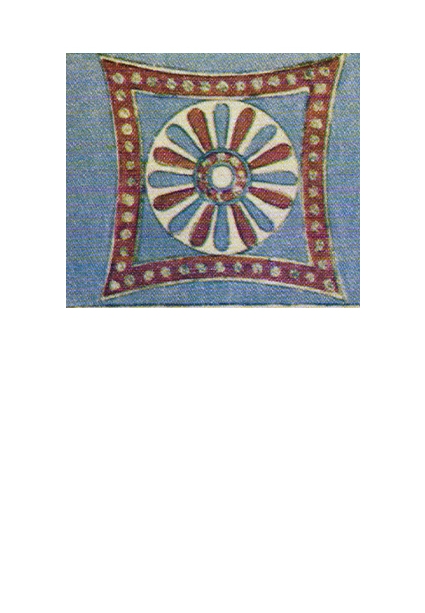It is understood that wall paintings are quite common in the decoration of the interiors of the king buildings in Urartu. We know that the Urartians affected by Assyria in many areas do not decorate the palaces and temples with their magnificent relief slabs (ortostats) decorating the Assyrian palaces. However, there is Assyrian influence on the wall paintings again. Examples of wall paintings were found out at the royal centers of Urartu such as Toprakkale, Karmir-Blur, Toprakkale, Kayalıdere, Çavuştepe, Ayanis and Arin-Berd. However, except for Toprakkale and Arin-Berd (Erebuni) samples, most of them are in unidentifiable parts. Wall paintings are made of geometric, herbal and figurative, successive/repetitive motifs created with red and dark blue colors on a white background. The symmetry is dominant in the paintings and they extend on the same planes on the walls that make up the space.
In Erebuni, there are wall paintings in identifiable size in the entrance, columned courtyard, small hall and temple area. With the contrast of dark blue and red, it was tried to produce more vivid scenes. White and beige colors are also widely used. Black color in the main contours of the figures and the green color in the display of tree branches was used.
The examples revealed in the Haldi Temple are important in terms of reflecting the general character of the wall paintings. In one example there are eight-leaf rosettes in a narrow stripe at the top, and multiarmed star motifs in the circle, which are arranged at regular intervals within the frieze, delimited by strips of blue paint At the bottom of this, a contrast between the leafs was formed with blue and red paint, palmet arrays were placed. Under it, stretches / threaded wipings reminded temple roofs extends to the other frieze extend in the same width. At the bottom, ram/sheep figures were placed in a narrow blue-colored stripes in rows. Un der this, strips with figures which hold bucket in their hands extend on both sides of the stylized tree of life. At the bottom, there is a series of stylized pomegranate motifs.
Another wall painting found in Erebuni Haldi Temple is thought to be the depiction of God Haldi. Haldi stands on a lion. He has a double-headed cap and wears a dress that extends to his toes. His right hand is in the position of saluting and holds the wand in his left hand.
In the “small hall” section of the palace, a large number of wall painting were found. Here, as in the Haldi Temple, the palmet, dendene, tree of life grafting stage motifs extend in parallel to each other from top to bottom. In center, bull figures are arranged at regular intervals, on both sides of the concave square motifs in the wider bow. Samples with lion figures placed on both sides of concave square motifs in the same area were also identified.
On the area called the Great Hall; the wall paintings with the gods holding the plant in his hand, the animals to be sacrificed, the tree of life, the building, the winged lion with the human body, the bull figures were found in pieces.
In the Apadana and Temple Area in Erzincan-Altıntepe, significant wall painting samples were found. The samples of Altıntepe are directly parallel with the examples of Arin-Berd/Erebuni in terms of construction technique and decoration. According to Özgüç, the surface to be painted in Altıntepe was firstly diluted and plastered with mudbrick. The top of this layer is mostly painted in blue. The motifs to be applied to the wall were pre-drawn with standard measuring instruments and then their insides were painted. The contours are drawn in black. The main colors are blue, red, beige and white.
In Altıntepe wall paintings, the figure and subject of tree of life grafting, animal fighting, kneeling bull, human faced winged lion were handled in main scenes. Again, eight-leaf rosettes, stylized pomegranates and dendan arrays are frequently used decorative elements.
The examples of relief and sculpture in Urartu are quite limited. It is surprising that the sculptures applications of Urartian, which are in contact with both the Assyrian and the Late Hittite culture, are so few. Urartians applied the scenes of orthostats, especially in Assyria, to the artifacts they created on the art of mineral processing of which they are highly specialized. As we will see later, we are able to follow the depiction art and iconography on bows, bronze plates and weapons.
The few examples of Urartian art of sculpture come from the settlements of II. Russian period. In particular, examples from the Adilcevaz Kef Castle are remarkable. In these scenes, the stone blocks of insemination of the Urartian tree of life were probably located on both sides of the entrance of a building. God Teisheba is pictured here standing on the bull.
It is seen that the same stage was repeated on the Adilcevaz distinctions. The winged jinnis graft the tree of life. The winged jini on the lion or god is grafted the tree of life in the middle. These reliefs were probably used as a base in palace structure. The same stage is located on the perimeter of the distinctions. They are also important in terms of reflecting the facade image of an Urartian structure.
In addition to these, the stela in the Van Museum, where a chariot is depicted and carved griffon figures with intaglio decorations and tree of life motifs on the interior walls of the Ayaniş Temple are another important examples of Urartian depiction.
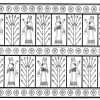
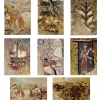
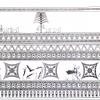
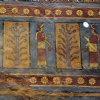
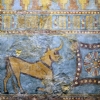
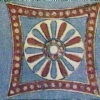
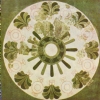
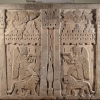
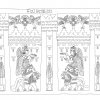
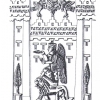
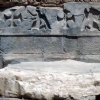
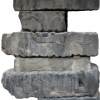
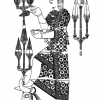
KABARTMA
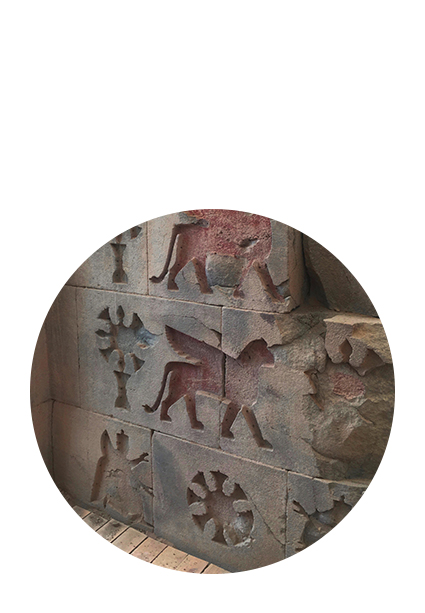
DUVAR RESMİ
